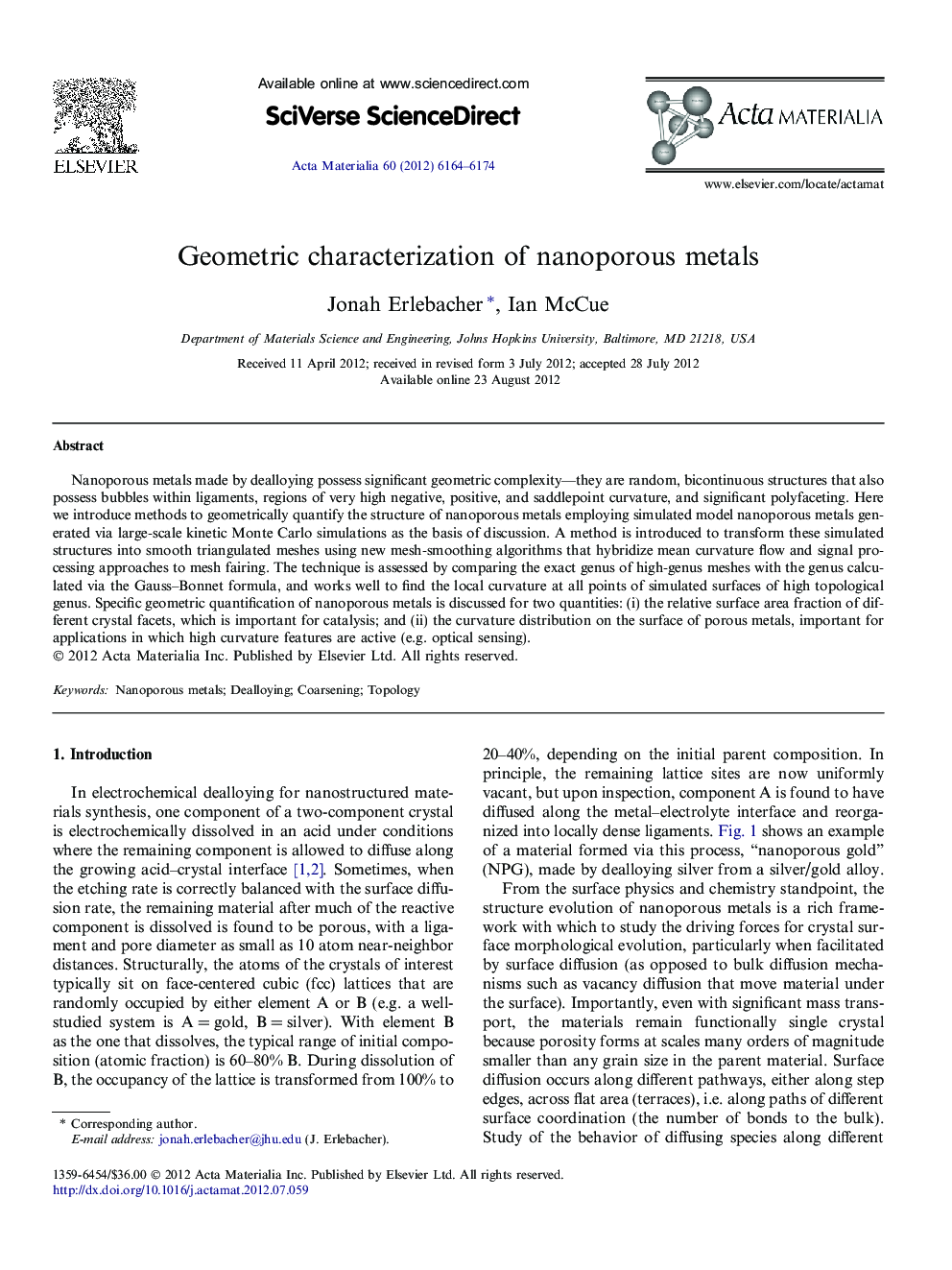| Article ID | Journal | Published Year | Pages | File Type |
|---|---|---|---|---|
| 1446572 | Acta Materialia | 2012 | 11 Pages |
Nanoporous metals made by dealloying possess significant geometric complexity—they are random, bicontinuous structures that also possess bubbles within ligaments, regions of very high negative, positive, and saddlepoint curvature, and significant polyfaceting. Here we introduce methods to geometrically quantify the structure of nanoporous metals employing simulated model nanoporous metals generated via large-scale kinetic Monte Carlo simulations as the basis of discussion. A method is introduced to transform these simulated structures into smooth triangulated meshes using new mesh-smoothing algorithms that hybridize mean curvature flow and signal processing approaches to mesh fairing. The technique is assessed by comparing the exact genus of high-genus meshes with the genus calculated via the Gauss–Bonnet formula, and works well to find the local curvature at all points of simulated surfaces of high topological genus. Specific geometric quantification of nanoporous metals is discussed for two quantities: (i) the relative surface area fraction of different crystal facets, which is important for catalysis; and (ii) the curvature distribution on the surface of porous metals, important for applications in which high curvature features are active (e.g. optical sensing).
